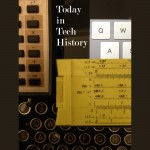This is a weekly column that offers news, insights, analysis, and user tips for rideshare platforms like Uber and Lyft. Look for it every Monday after the live show, right here on dailytechnewsshow.com.
After the Democratic National Convention wrapped up in Philadelphia last week, Daily Beast reporter Olivia Nuzzi decided to take an Uber back to her home in Washington, DC. She tells the story on Twitter of a trip that started out uneventful but got creepy when the driver started giving unsolicited “compliments”. The technical term for this is actually catcalling, and it is a form of sexual harassment–the most common form women face today. The situation was resolved about as expected, with the reporter calling Uber out on social media and the driver being suspended from the platform.
This, unfortunately, did not sit well with the drivers of the UberPeople community, with allegations of racism, attention whoring, and other insults being thrown at the reporter. There’s also the typical tack that Nuzzi needs to “get out more and recognize and compliment” when she receives one. Almost none of them think the driver should have been deactivated over this incident. Even considering that older men make up the majority of Uber’s pool of drivers, the lack of empathy for Nuzzi’s predicament is startling.
I personally think that Uber should have zero tolerance for this type of behavior from its drivers. The company has enough issues dealing with click-baity articles accusing them of hiring sex offenders, they do NOT need to extra press that comes from them being soft on harassment. When drivers realize that their gigs may be brought to an abrupt end because they can’t figure out the difference between a compliment and harassment, maybe they’ll take the issue more seriously.
Until then, I strongly encourage everyone who is the victim of catcalling from drivers to report it to Uber or Lyft. The customer service of these companies is miserable at first attempt, so be prepared to make a stink on social media in order to get their attention. Harassment is bad enough on the street, I can only imagine how much worse it would feel confined in a stranger’s vehicle. If Uber drivers won’t take harassment seriously out of a sense of human decency, maybe they’ll start to pay attention when they realize it can affect their bottom line as well.
Sekani Wright is an experienced Uber driver working in the Los Angeles metropolitan area. If you have any questions you would like answered for this column, you can contact him at djsekani at gmail dot com, or on twitter and reddit at the username djsekani. Have a safe trip!
 1811 – Elisha Otis was born. He invented a safety brake that prevented elevators from falling if the hoisting cable broke. Thank him every time you get in an elevator.
1811 – Elisha Otis was born. He invented a safety brake that prevented elevators from falling if the hoisting cable broke. Thank him every time you get in an elevator.
 Samsung leapfrogs to the Galaxy note 7, Instagram takes on Snapchat, and Washington state sues Comcast.
Samsung leapfrogs to the Galaxy note 7, Instagram takes on Snapchat, and Washington state sues Comcast.
 Uber China merges with Didi Chuxing, Pokémon Go updates its app, Warner Bros. asks Google to take down a Reddit link.
Uber China merges with Didi Chuxing, Pokémon Go updates its app, Warner Bros. asks Google to take down a Reddit link.